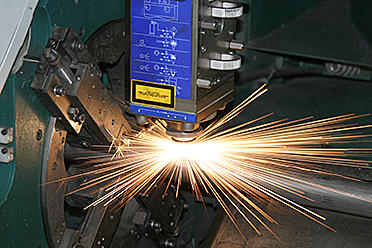PML Priority: Advanced Measurement Science for the Application of Intense Light Sources in Manufacturing and Materials Processing

Key research and development areas (already targeted by a European public-private partnership) include laser welding of composites, advanced steels, and dissimilar materials; basic research on laser-matter interactions using extreme light sources; and selective laser melting for additive manufacturing. Laser process heating and cooling rates can easily reach 1012 K/s, resulting in very narrow operational tolerances where poor laser control may lead to defects in welds or in the materials being processed.
In addition, high-power LEDs are finding application in the curing of polymers and coatings. New methods are needed to allow manufacturers to better control the laser or LED power and its spatial and temporal profile. Additionally, methods are needed to accurately measure the surface and interior temperatures of the material to be processed.
In a recent report, the National Science and Technology Council recommended that the nation
"...promote research into new ... materials properties measurement, and materials property databases, including on laser-materials interaction, which will support continued U.S. innovation in optics and photonics"
In response to the needs highlighted above, NIST's Physical Measurement Laboratory expects to:
- Develop the measurement tools for accurately characterizing high-power laser beams and their effect on materials during and after processing for application to laser cutting and welding and laser-based additive manufacturing.
- Advance the application of extreme ultraviolet radiation metrology for static and dynamic imaging and lithography.
- Provide the optical metrology to enable the application of new high intensity ultraviolet light-emitting diodes for materials processing.
Specific goals include:
- Development of new radiometers and standards light sources to measure intense LED light sources.
- Demonstration of new capabilities and test methods to improve laser weld reproducibility and integrity through optimization of laser spatial and temporal profile and laser power.
- Demonstration of a prototype extreme ultraviolet imaging nanoscale system.

